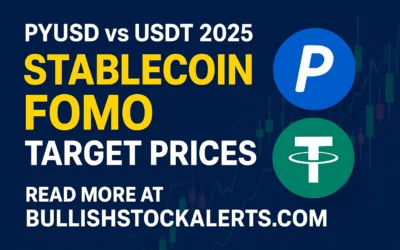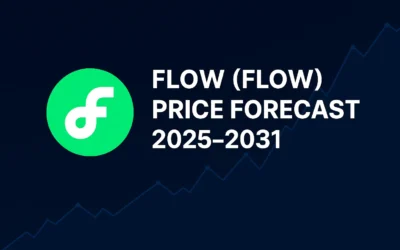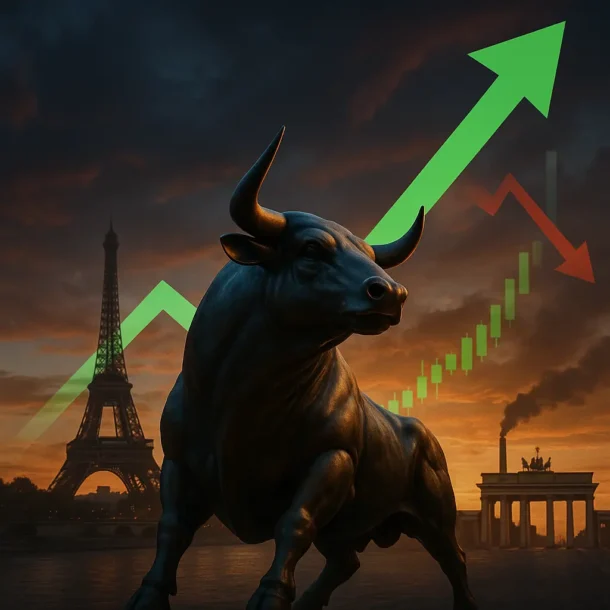Below is a structured, data-rich analysis for the four mentioned companies—Visa, DBS Group, Tonnellerie François Frères, and Canadian National Railway—all extracted from the provided information.
For those looking to embark on their investing journey, our affiliate link for Trade Republic offers a €30 bonus in shares as a gift when you complete three purchase transactions in ten days: Trade Republic.
Visa
Introduction
Visa operates a global payment technology network, VisaNet, facilitating authorization, clearing, and settlement of payment transactions. It dominates the market with 61% of issued bank cards, connecting over 18,000 financial institutions worldwide. Visa doesn’t issue cards itself or handle customer accounts directly; instead, it ensures secure, smooth transactions between consumers, banks, and merchants.
Financial Performance
- 10-year annual revenue growth: +10.7%
- 10-year annual net income growth: +13.2%
- Free Cash Flow (FCF) rose by +53% over the last 5 years
- Gross margin: >80%
- 5-year net margin: 51.5% (vs. industry average 32.3%)
- ROE over 5 years: 37%
- ROA: 16.3%
- Net debt in 2023: ~$2 billion
- 5-year cumulative FCF (through 2022): $66.4 billion+
Key Highlights
- Leader in online payments: 41.7% of total credit card purchase volume online in 2022
- Dividend growth: from $0.10 to $0.52 per quarter in a decade; 10-year dividend CAGR: +18%
- Dividend payout ratio (cash-flow basis) under 20%, showing strong dividend sustainability
Profitability and Valuation
- Exceptional margins and ROE, reflecting strong competitive advantage
- P/E (PER): 32.67 vs. 17.85 industry (indicating premium valuation)
- Price-to-Cash-Flow: 14.46 vs. 12.21 industry
- EV/EBITDA: 24.61 vs. 13.53 industry
- DCF fair value: $181.14 per share vs. current price $284.15 (+56.9% premium)
Debt and Leverage
- Minimal net debt (~$2 billion) relative to massive FCF
- Interest charges only 1.50% of operating income
- Could repay entire net debt with about one month’s FCF
Growth Prospects
- Digital payments market: from $81.03 billion in 2022 to $361.3 billion by 2030, CAGR ~20.05%
- Strategic acquisitions (Prosa, Pismo) to enhance services and future revenue streams
Technical Analysis
No specific technical metrics provided.
Potential Catalysts
- Acceleration of e-commerce
- Growing adoption of contactless and mobile payments
- Global expansion into emerging markets
Leadership and Strategic Direction
- “Chaordic” organizational model since the 1960s fosters adaptability
- Internal CEO succession ensures continuity
- Long history of innovation and stable management
Impact of Macroeconomic Factors
- Rapid shift away from cash fuels Visa’s growth
- Potential regulatory risks due to oligopolistic market structure (Visa + Mastercard ~80% share)
TAM (Total Addressable Market)
- Digital payments TAM expanding rapidly, positioning Visa to capture a large share
Market Sentiment and Engagement
- Broad investor confidence, including high-profile investors
- Strong financial track record and consistent dividend increases
Conclusion
Visa’s high margins, robust growth, and unmatched market dominance underscore its premium valuation. While the DCF suggests potential overvaluation, Visa’s strategic acquisitions, powerful network effect, and positive industry outlook highlight the company’s long-term growth potential.
DBS Group
Introduction
DBS Group Holdings Ltd is a major Asian financial institution, headquartered in Singapore, with operations spanning retail banking, wealth management, corporate banking, and treasury services. Its generous, stable dividend policy and solid financial metrics set it apart in the banking sector.
Financial Performance
- 5-year revenue growth: +9%
- 10-year revenue growth: +8.3%
- 5-year gross profit growth: +9%
- ROE (12 months): 16.9%, 5-year avg: 12.5%
- 5-year net margin avg: 44.2% (sector ~25%)
- Dividend: from 1.50$ to 1.92$ this year (+28%), dividend yield ~6.10%
- Free Cash Flow growing steadily
Key Highlights
- No dividend interruption for over a decade, consistently increasing
- 1-for-10 bonus share distribution
- Cash/Debt ratio: 2.65 vs. 1.21 sector, indicating robust liquidity
Profitability and Valuation
- Superior profitability metrics compared to peers
- P/E: 9.11 vs. 8.85 industry (slightly higher)
- EV/EBITDA: 2.30 vs. 0.92 industry
- P/B: 1.47 vs. 1.21 industry
- DCF suggests a potential 50%+ undervaluation (fair value ~52.91$ vs. current ~26.34$)
Debt and Leverage
- DTI: 7.39 (expectedly high for a bank)
- Strong liquidity and effective risk management
- Adequate capitalization to weather economic fluctuations
Growth Prospects
- Stable economies in Singapore and Hong Kong
- NII stabilized through reduced exposure to variable rates
- Acquisition of Citibank Taiwan’s consumer business supports future revenue streams
Technical Analysis
No specific technical indicators provided.
Potential Catalysts
- Sustained high dividends
- Southeast Asian economic growth
- Boost from rising fee-based income, stable NII
Leadership and Strategic Direction
- Management adeptly adjusting interest rate exposures
- Consistent dividend hikes and strategic acquisitions
- Strong brand in an economically dynamic region
Impact of Macroeconomic Factors
- Singapore economy growth ~1.1%, Hong Kong GDP +3.2% in 2023
- Stable credit quality, no surge in defaults
- Potential downside from global tech sector layoffs, but limited effect so far
TAM (Total Addressable Market)
- Large addressable market in Asia, expanding financial services demand
Market Sentiment and Engagement
- Reputation as a reliable dividend payer
- Viewed as stable, long-term holding in growth-oriented Asian markets
Conclusion
DBS Group stands out with robust profitability, strong dividends, and strategic regional expansion. Despite some mixed valuation signals, its dependable dividend, solid liquidity, and strong foothold in Asia’s thriving financial sector position it as a compelling long-term investment.
Tonnellerie François Frères (TFF)
Introduction
TFF is a family-owned global leader in barrel making, serving wine, whisky, and bourbon markets. With 439 million euros in revenue (2023), 39 production sites, and 1,670 employees, TFF has built an integrated vertical structure controlling its own wood supply.
Financial Performance
- 15-year annual growth: +10.4%
- Revenue 2023: 439 million euros
- Margins significantly above industry: gross margin 52% vs. 21.5%, net margin 12% vs. 4%
- Major CAPEX investments (300 million euros over 7 years) to expand bourbon segment
- High stock of wood valued at 375 million euros
- Growth funded by reinvested earnings, limiting FCF in the short term due to inventory build-up
Key Highlights
- #1 worldwide in wine and spirits barrel production and related products
- Rapid bourbon market penetration: ~18% US market share in 7 years
- Half growth from internal initiatives, half from acquisitions
Profitability and Valuation
- Gross margin: 52% vs. 21.5% sector
- Net margin: 12% vs. 4% sector
- EV/EBITDA: 12.85 vs. 7.98 sector (higher valuation)
- PS: 2.08 vs. 1.07 industry
- PER: 18.65 vs. 20.95 industry (slightly cheaper on P/E)
- DCF fair value: ~32 euros vs. current price 45 euros (implying overvaluation)
Debt and Leverage
- D/E: 48.02%
- Interest/operating profit: 6.30%
- DTI >4 (a bit high), but debt is used strategically for growth
Growth Prospects
- Expansion in bourbon segment drives international growth
- Diversification into multiple markets (wine, whisky, bourbon)
- Strong vertical integration reduces supply risks
Technical Analysis
No technical metrics provided.
Potential Catalysts
- Bourbon boom in the US
- Efficient acquisition strategy
- Innovative reuse of barrels for added revenue streams
Leadership and Strategic Direction
- Long-term family management, 4th generation
- Bold reinvestment strategy, focusing on growth rather than high dividends
- Successful turnarounds and efficiency improvements in acquired companies
Impact of Macroeconomic Factors
- Climate risks (fire, frost, heat) impacting production cycles
- High employee turnover (>60% in US workshops) due to physically demanding work
- Rising commodity prices potentially squeezing margins
TAM (Total Addressable Market)
- Expanding global demand for premium alcoholic beverages (wine, whisky, bourbon)
Market Sentiment and Engagement
- Renowned brand, premium positioning
- Leader in its niche market, benefiting from craftsmanship and quality
Conclusion
TFF exemplifies robust growth, remarkable profitability, and strategic market entry in high-value segments like bourbon. While valuation appears stretched, its vertical integration, dynamic leadership, and proven ability to capitalize on market trends offer compelling long-term prospects.
Canadian National Railway (CNR)
Introduction
Founded in 1919, Canadian National Railway operates a 19,500-mile network across Canada and the US. It transports a wide range of goods, including forest, agricultural, and chemical products. With long-term contracts, CNR is deeply integrated into clients’ supply chains.
Financial Performance
- Revenue growth from ~14 billion in 2019 to over 16 billion (TTM)
- 5-year annual net income growth: +5.4%
- FCF growth: +8.9% over the observed period
- Gross margin: 55.78% vs. 30.95% sector
- Net margin: 32.86% vs. 6.01% sector
- Dividends paid uninterrupted for 28 years, dividend CAGR 10Y: +13.10%
Key Highlights
- Dividend sustained even during 2007-2009 recession
- Reduced shares outstanding yearly, adding value to remaining shareholders
- Recognized among top Canadian employers
Profitability and Valuation
- Superior margins and ROIC: 17.4% current vs. 13.3% 5-year avg, WACC: 8.47%
- P/E: 20.59 vs. 23.35 sector (slightly cheaper)
- PS: 6.73 vs. 7.77 sector (less expensive on sales basis)
- DCF fair value: 108.65 USD vs. current 126.05 USD (slight overvaluation)
Debt and Leverage
- Total debt increased from ~9.2 billion to ~20 billion
- D/E: 84.39%
- Quick ratio: 0.24 (low liquidity normal for heavy asset industry)
- Cash increased alongside debt, indicating prudent financial management
Growth Prospects
- Stable freight demand fueled by globalization
- Diversification across multiple commodity groups
- Consistent dividend increases help hedge against inflation
Technical Analysis
No technical metrics provided.
Potential Catalysts
- Growing trade flows in North America
- Established long-term contracts
- Ongoing efficiency improvements and network expansions
Leadership and Strategic Direction
- Share buybacks reducing share count
- High ROIC exceeding cost of capital
- Emphasis on employee welfare and community engagement
Impact of Macroeconomic Factors
- Regulatory environment and unionized labor present potential constraints
- Competition from trucking and possible new regulations on certain goods
- Historically resilient, performing better than the broader market in recessions
TAM (Total Addressable Market)
- Large North American freight market with stable long-term prospects
Market Sentiment and Engagement
- Viewed as a stable, inflation-resistant dividend aristocrat
- Supported by high-profile investors seeking long-term resilience
Price Projections and Stop Loss Guidelines
While no specific forward price targets were provided in the initial data for these companies, long-term investors often look to fundamental metrics, growth prospects, and market sentiment to gauge potential upside. Given the robust performance and solid fundamentals discussed:
- Visa: With a premium valuation, investors might consider initiating positions on market dips or periods of broader market weakness. A prudent long-term entry range might be closer to the DCF-estimated fair value (around $181 per share), although such a pullback may be challenging. A stop loss could be placed below a key technical support level or a significant recent low, offering downside protection while allowing room for normal market fluctuations.
- DBS Group: The DCF suggests significant potential undervaluation if assumptions hold true. An entry near current prices might still be reasonable for income-oriented investors. A stop loss could be placed just below critical support, potentially 5–10% under recent lows, to limit downside if macroeconomic conditions or interest rate environments unexpectedly shift.
- Tonnellerie François Frères: With a current price above the DCF fair value, value-focused investors may await a correction toward the €32 fair value zone. A stop loss might be set slightly below recent support or around a key technical level, providing a balance between potential growth in the premium beverage market and risk management if the stock corrects further.
- Canadian National Railway: Slight overvaluation per DCF suggests awaiting a moderate pullback or consolidations in price. A stop loss might be placed a comfortable margin below a recognized long-term moving average or a structurally significant support level, aiming to protect against cyclical downturns or unforeseen regulatory impacts.
Caution: Stop losses should be customized to individual risk tolerance, portfolio size, and investment horizon. Given these stocks’ generally strong fundamentals and long-term appeal, tight stop losses may result in premature exits during normal market volatility. Investors may prefer a moderate stop-loss threshold to retain long-term exposure unless there is a fundamental deterioration in the company’s performance or market conditions.
Conclusion
CNR offers resilience, stable dividends, and high margins in a heavily regulated, capital-intensive sector. Although the current share price may be slightly above DCF valuations, its proven track record of weathering economic downturns, strong cash flow generation, and steady dividend growth make it an attractive long-term holding.
Final Overall Conclusion
Each of these four companies—Visa, DBS Group, Tonnellerie François Frères, and Canadian National Railway—presents unique advantages, impressive financials, and strategic market positions. While some appear overvalued based on DCF models, their growth trajectories, strong profitability, diverse revenue streams, and dividend track records suggest solid long-term potential. Whether seeking exposure to booming digital payments (Visa), high-yield Asian banking (DBS), premium beverage-aging solutions (TFF), or North American freight resilience (CNR), investors must weigh valuation risks against the undeniable allure of stable dividends, robust growth, and strategic market leadership. Act now, or risk missing out on these premium, long-term opportunities!
Discover More
For more insights into analyzing value and growth stocks poised for sustainable growth, consider this expert guide. It provides valuable strategies for identifying high-potential value and growth stocks.
We also have other highly attractive stocks in our portfolios. To explore these opportunities, visit our investment portfolios.
This analysis serves as information only and should not be interpreted as investment advice. Conduct your own research or consult with a financial advisor before making investment decisions.









0 Comments